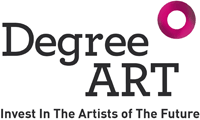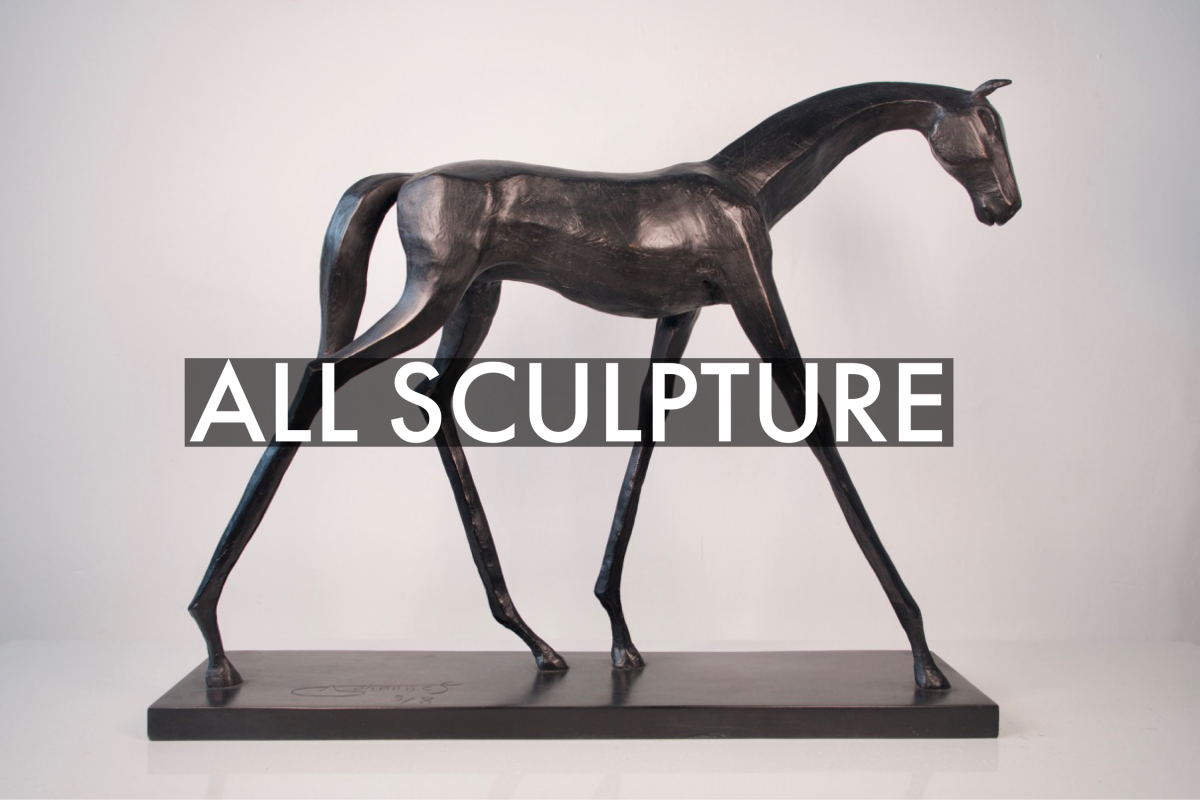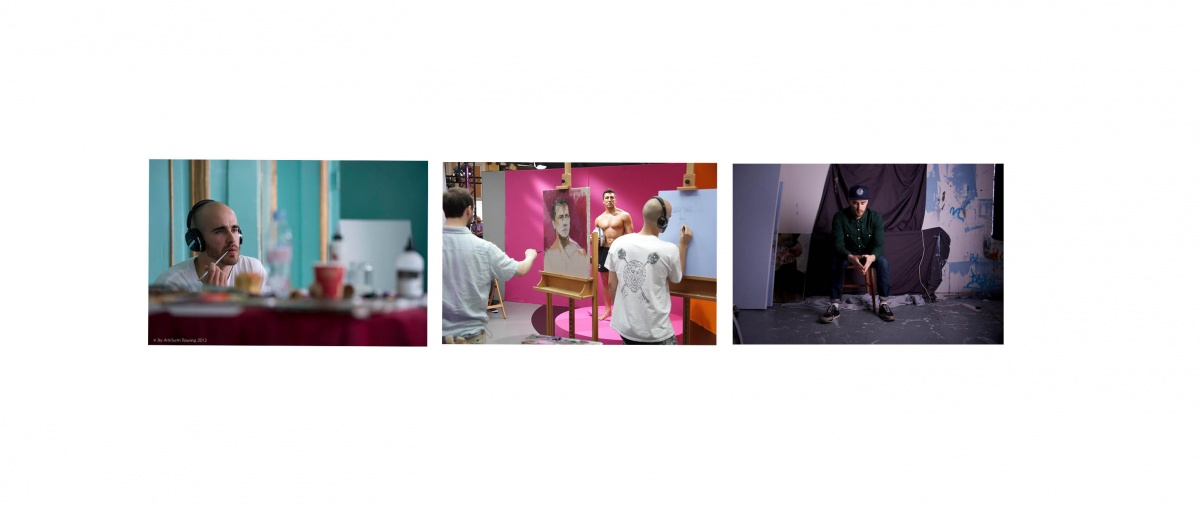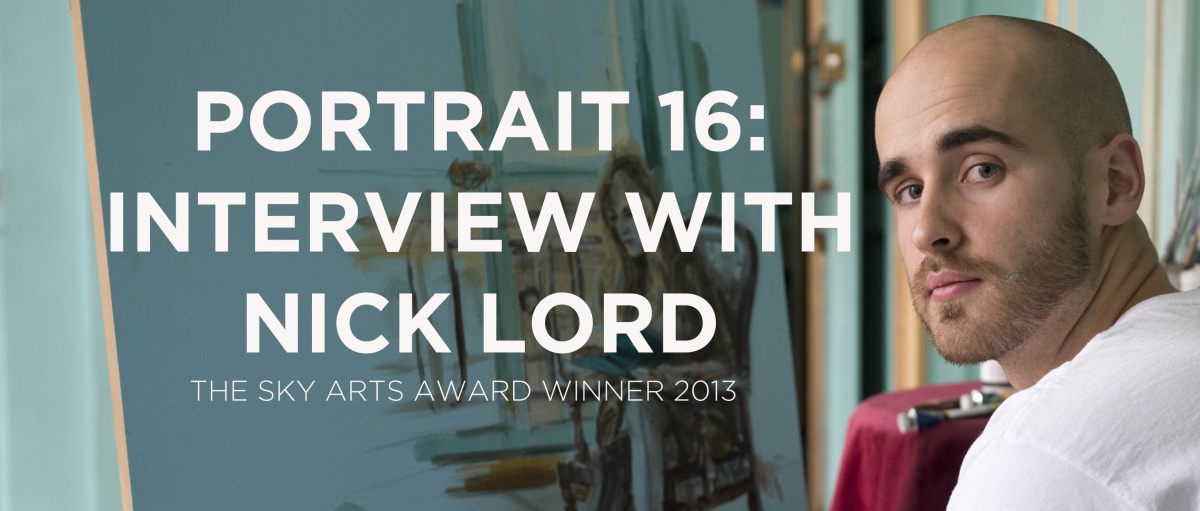
To coincide with the opening of Portrait 16, DegreeArt.com exclusively interviews portrait artist Nick Lord. Nick Lord discusses winning the Sky Arts Award in 2013, the reasons behind his unique artistic style and sheds light on his commissioning process.
Whats the most ambitious commission you’ve worked on?
Where to begin?! Each commission is so different from the previous; I’ve definitely got a top 3! The Lord Chief Justice of England and Wales, Lance Sgt Johnson Beharry VC’s commission for the Tower of London and Professor Peter Kopelman’s commission for St Georges University London. Each commission had its own briefs and challenges.
Can you take us through the process of commissioning, from the initial sitting to the final outcome, what can a client expect?
A commission totally depends on what the client wants. Whether they want me to create a painting for them from my personal work and ideas, or whether they’re commissioning me to paint an idea that they have in mind. For me, the most important aspect to any commission is getting to know the client on a personal level. The more I get to know the person the easier it becomes to build up a personality and character. I’m always looking out to create a personal portrait of the client.
Did your journey throughout the SKY ARTS Award influence how you work?
Being a part of and winning Sky Arts Portraits Artist of The Year, has been and has had a massive influence in how I work. The competition forced me to work in ways and in surroundings I’d never worked in before. The most influence aspect of the competition was the ability to go out to Paris and paint in one of the art world’s most iconic cities. It was there that I discovered Courbet’s work in the flesh. The sheer size and detail meant I felt like I could just get up and walk into them. That sense of escapism is becoming more and more of a focal point in my work as well as the importance of body language and the notion of modern day realism.
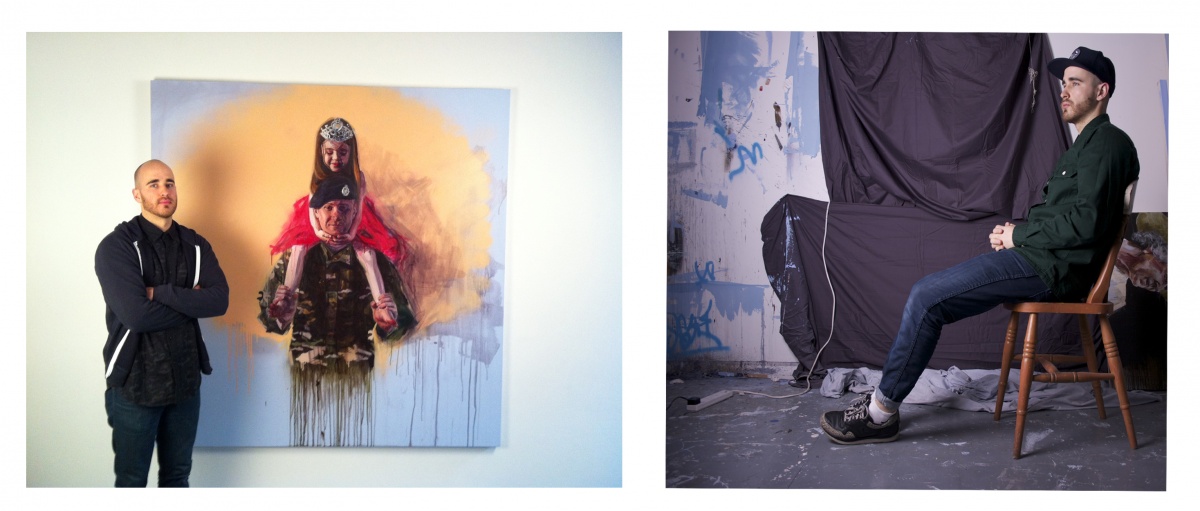
Can you tell us more on your unique aesthetic of mark making?
The way I paint stems from when I first started to paint. Throughout my time in school, I always wanted to paint. It wasn’t until I was on my foundation that I had time to learn how too. I’ve always been inspired by the expressionism artists like Schiele. His way of mark making and drawing started it all for me. When I paint I like to see the marks I’ve made. It’s like a construction of flesh on canvas. I’ve never had the patience for photo realism-I like to work quick and boldly, which acrylic allows me to do. I like to be able to see the paint on the canvas, it tells the story of the painting. I love making the confident marks.
Why do you use a pastel blue for the backgrounds of your paintings?
The pastel blue background seems to have become an unintentional signature colour and process within my work! It’s purely for practical reasons. Before the canvas is primed it’s creamy white in colour. The blue background allows me to paint these lighter colours in and makes them “pop out” against the blue. Because I work in layers and build the paint up, it helps add depth and tone to the lighter creamier flesh tones.
 Courbet has greatly influenced your works, in terms of realism. What contemporary artists inspire you?
Courbet has greatly influenced your works, in terms of realism. What contemporary artists inspire you?
Courbet and the French realists have been major influences in my recent work, especially the way they painted everyday scenarios and people. I’m inspired by a huge range of artists working in all sorts of different mediums and styles, with different thoughts and concepts. Artists like Peter Doig, Gregory Crewdson, Eric Fischl and Grayson Perry have majorly inspired my new work even though they’re not all painters. I take different aspects of their work, from every artist or image that inspires me, and jumble them altogether to help with my own ideas and work. For me I love the idea of working from past experiences and memories, I get this sense of nostalgia and memory exploration from Doig’s work. Crewdsons Photographs create a great sense of drama and unnervingness, which I’m really drawn too, as well as the technicality! The narrative and painterly quality in Fischl’s work is his biggest influence. Similar to Crewdson, Fischl’s work grips you with suspense and the effect that you’re not 100% sure on what’s going on or what’s being depicted. I love Grayson’s ability to take note of his surroundings and take influence from what he sees and experiences. This notion of being inspired by your surrounds is becoming more and more evident and important in my work.
For any aspiring artists, what would your advice in the field of portraiture?
I think being a portraiture artist at this time, is one of the most exciting and developing fields to be in. It disappeared for a bit, but know it’s coming back with vengeance! My advice to new and aspiring artists doing portraiture would be to crack on! Get experimenting, develop your own style and be confident with how you paint. Just go for it. Research artists that inspire you, try different styles and find out what works for you.
What can we expect from you in the near future?
My work in the future is going to consist of the constant exploration of paint, painting portraiture and making it relatable to me. It’s still early days, but my new self-portrait in the water is where I can see my work heading. Incorporating more scenes and backgrounds, playing with narratives and hidden narratives. It’s still going to be inspired by the realist artists of the past, but it’s also going to be connecting with occurrences, event and things that I see- tying in travelling, escapism and nostalgia.It’s also a massive case of me just painting what I want to paint and what I see! If that makes sense!
For more information about commisioning Nick Lord's work please contact Isobel Beauchamp, isobel@degreeart.com
